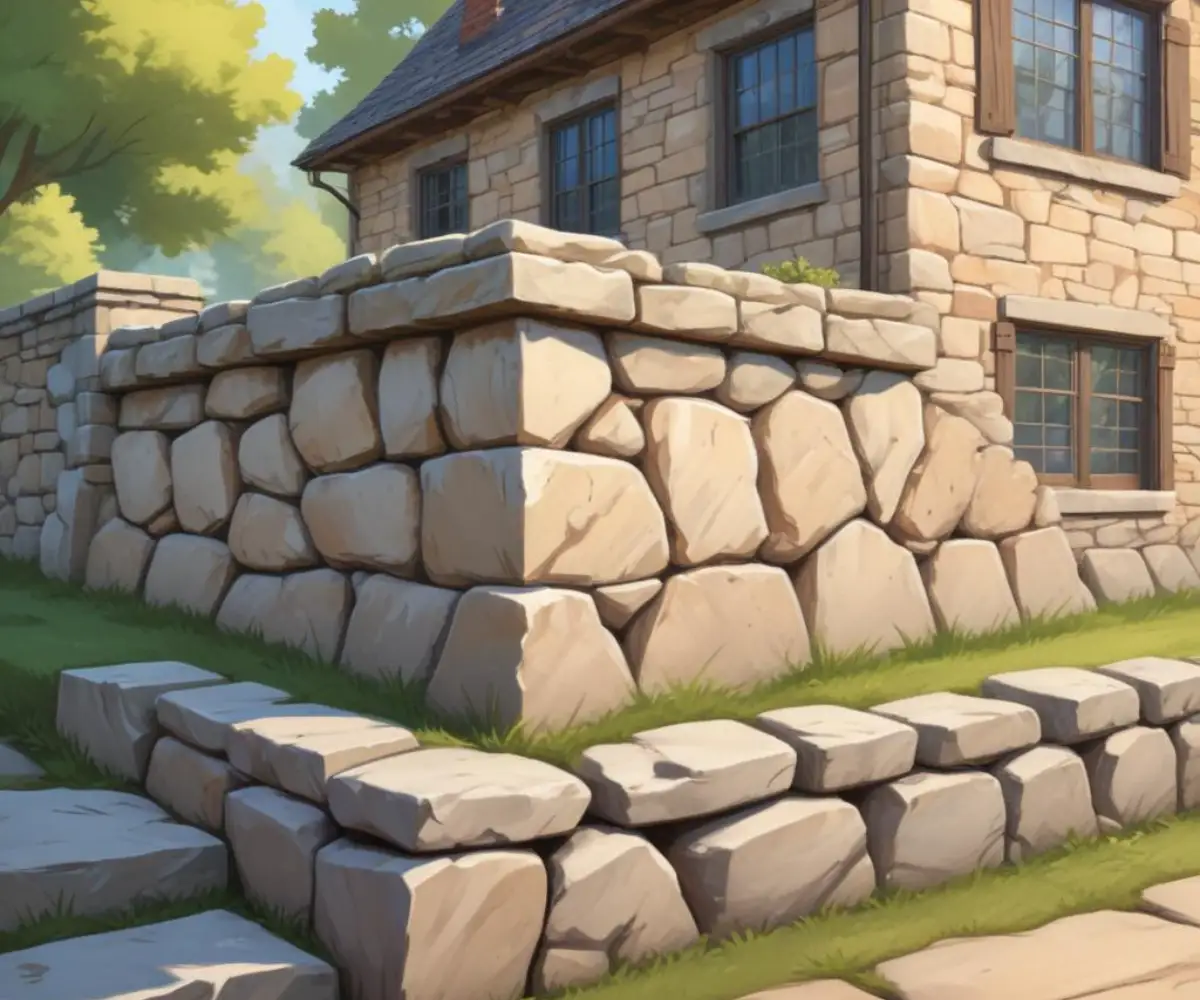Buying a House with a Stone Foundation? Don’t Sign Anything Until You Read This
There’s an undeniable romance to homes with stone foundations. They evoke a sense of history, permanence, and craftsmanship that modern construction often lacks. Many of these beautiful structures have stood for over a century, a testament to the builders who laid each stone by hand.
But beneath that charming facade can lie a host of expensive and complicated problems. Falling in love with the historic character without understanding the potential pitfalls is a costly mistake many eager homebuyers make. Before you even consider making an offer, you must know what you’re getting into.
You'll Learn About
The Hidden Problems Lurking in Your Stone Foundation
Stone foundations, typically found in homes built before the 1920s, are fundamentally different from modern concrete. They are porous, held together by mortar, and were built in an era before modern waterproofing and drainage techniques. This unique construction leads to a specific set of vulnerabilities that every potential buyer must be aware of.
Water: The Number One Enemy
The most common and destructive issue with stone foundations is water intrusion. Because both the stones and the old lime-based mortar are porous, moisture from the surrounding soil can easily seep through, leading to a perpetually damp or wet basement. This isn’t just a minor inconvenience; it’s the root cause of much larger problems.
Chronic dampness creates the perfect environment for mold and mildew growth, which can cause musty odors and pose health risks. More seriously, constant moisture degrades the mortar that holds the entire foundation together. This leads to crumbling joints and a weakened structure.

The Wrong Mortar: A Catastrophic “Repair”
A huge issue that many homeowners and even contractors don’t understand is the critical difference between historic lime mortar and modern Portland cement-based mortar. Using the wrong mortar is one of the most damaging things you can do to a stone foundation.
Original stone foundations were built to be “breathable.” The soft lime mortar would absorb moisture from the ground and then allow it to evaporate. Modern Portland cement is much harder and denser, and it traps moisture. When a stone foundation is “repaired” with Portland cement, it forces the moisture into the stones themselves. During freeze-thaw cycles, this trapped water can cause the faces of the stones to flake or pop off—a process called spalling—irreversibly damaging the foundation’s structure.
Structural Integrity at Risk
Over a century or more, the immense pressure from the surrounding earth, combined with the effects of moisture, can cause stone foundation walls to bow inwards or bulge. You might notice sandy piles of deteriorated mortar at the base of the basement walls, a clear sign the joints are failing.
While some settling is normal in an old house, significant movement is a red flag. Look for tell-tale stair-step cracks in the mortar joints or diagonal cracks around windows and doors on the floors above. These are signs the foundation is shifting and may require the intervention of a structural engineer.
Your Pre-Purchase Stone Foundation Inspection Checklist
A standard home inspection is often not sufficient for a house with a stone foundation. You need to scrutinize the basement and exterior yourself and, most importantly, hire specialists who understand historic masonry.
Step 1: The Visual Inspection
During your viewing, pay close attention to the basement. Bring a powerful flashlight and look for white, chalky residue on the stones (efflorescence), which indicates evaporating moisture. Check for damp spots, active water trickles, or a strong, musty smell.
Carefully examine the mortar joints. Is the mortar firm, or does it crumble into sand when you touch it? Look for previous repairs; modern cement patches will typically be a much darker gray and harder than the original lime mortar. Sight down the length of each wall to check for any bowing or bulging.
Step 2: Hire a Structural Engineer
If you’re serious about the property, hiring an independent structural engineer is non-negotiable. Unlike a general home inspector, an engineer can assess the severity of any bowing or cracking and determine if the foundation’s structural integrity is compromised. Their report is crucial for understanding the scope of potential repairs.
This step is particularly vital if you notice significant horizontal cracks or walls leaning inward. An engineer can tell you whether the issue can be monitored, requires immediate stabilization, or if the foundation needs a complete rebuild—a project that can easily cost tens of thousands of dollars.
Step 3: Get Quotes from Masonry Experts
If the engineer identifies issues like crumbling mortar, you’ll need to understand the cost of repairs. Contact masons who specialize in historic restoration. Ask them specifically about their experience with lime mortar and the process of repointing.
Getting quotes before you buy gives you powerful leverage for negotiations. Sellers may be unaware of the true cost of proper restoration, and a detailed quote can be used to ask for a price reduction or seller concessions.
Budgeting for the Inevitable: Common Repairs and Costs
Owning a home with a stone foundation means accepting that maintenance and repairs are not a matter of “if,” but “when.” Understanding these potential costs is vital before you commit.
| Problem | Description | Estimated Cost Range |
|---|---|---|
| Minor Repointing | Replacing crumbling mortar in localized areas to seal gaps and strengthen joints. | $1,500 – $5,000 |
| Full Basement Repointing | Removing and replacing all mortar joints throughout the entire basement. | $7,000 – $20,000+ |
| Exterior Waterproofing | Excavating around the foundation, applying a waterproof membrane, and installing a drainage system (e.g., French drain). | $10,000 – $30,000+ |
| Structural Reinforcement | Installing carbon fiber straps or steel beams to stabilize bowing walls. | $5,000 – $15,000 |
| Foundation Rebuild | A worst-case scenario involving lifting the house and completely rebuilding a failed section of the foundation. | $30,000 – $100,000+ |
Waterproofing: The Key to a Healthy Stone Foundation
The single most important thing you can do to protect a stone foundation is to manage water on the outside of the house. All foundation problems begin with water. If you can keep the soil around the foundation dry, you can prevent most of these issues from ever starting.
Exterior Water Management is Critical
Start with the simple things. Gutters and downspouts must be clean and functional. Downspout extensions should carry roof water at least 6-10 feet away from the foundation. The ground around the house should be graded to slope away, so surface water flows away from the walls rather than towards them.
For more serious water issues, an exterior French drain system is the most effective solution. This involves excavating a trench around the perimeter of the foundation, installing a perforated pipe, and applying a waterproof membrane to the exterior walls before backfilling with gravel. This is an expensive project but is the correct way to solve water intrusion problems permanently.
Interior Water Management as a Backup
Interior drainage systems and sump pumps can help manage water that still gets into the basement. These systems collect water at the base of the walls and pump it out and away from the house. While helpful, they should be considered a secondary solution to robust exterior water management.
Is Buying a House with a Stone Foundation a Deal-Breaker?
A stone foundation does not have to be a deal-breaker, but it does demand a higher level of due diligence from the buyer. These homes, often dating back to the 19th century, have stood the test of time and can certainly stand for another hundred years with proper care.
The decision comes down to three factors: the current condition, your budget for repairs, and your tolerance for ongoing maintenance. If an expert inspection reveals a well-maintained foundation with only minor issues, it could be a wonderful and solid home. However, if you see bulging walls and crumbling mortar, you must be prepared for significant and immediate expenses. Walk into the purchase with your eyes wide open, armed with knowledge and realistic expectations, and that charming stone house can be a dream come true, not a financial nightmare.
Frequently Asked Questions
How long do stone foundations last?
Stone foundations are known for their remarkable durability and can last for well over 100 years. With proper maintenance, such as occasional repointing of the mortar, a stone foundation can easily last for another century or more. The longevity of these foundations is due to the high compressive strength and durability of natural stone.
What are the common problems with stone foundations?
The most frequent issue with stone foundations is the deterioration of the mortar that holds the stones together. This can lead to crumbling, gaps, and potential water infiltration, as stone is a porous material. Other signs of trouble include bowing walls, cracks in the stones, or a white, powdery substance known as efflorescence.
Should I avoid buying a house with a stone foundation?
A stone foundation does not have to be a dealbreaker when purchasing a home. These foundations are very strong and, if well-maintained, can be trusted to last. It is crucial to have a thorough inspection by a professional familiar with older homes to assess the foundation’s current condition and any required maintenance.
What should I look for when inspecting a stone foundation?
When viewing a property, check the foundation walls for any signs of bowing, bulging, or shifting. Look for crumbling mortar, sand at the base of the walls, and significant cracks. Also, check for dampness or water stains, which could indicate moisture problems that need to be addressed.
How much does it cost to repair a stone foundation?
The cost of repairs can vary significantly based on the issue. Repointing the mortar on a standard-sized basement can range from approximately $3,500 to $8,000. Minor crack repairs might only cost a few hundred dollars, while more extensive structural problems could lead to significantly higher costs.

